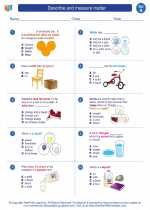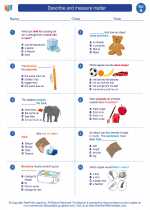Adaptation
Adaptation is the process by which a species becomes better suited to its environment in order to survive and reproduce. This can occur through natural selection, where organisms with advantageous traits are more likely to survive and pass on their genes to the next generation.
Types of Adaptation
- Structural Adaptation: Physical features of an organism that help it survive in its environment. For example, the long neck of a giraffe helps it reach leaves high in trees.
- Behavioral Adaptation: Actions or behaviors that help an organism survive. For example, birds migrating to warmer climates in the winter.
- Physiological Adaptation: Internal systems and processes that help an organism survive. For example, camels storing water in their humps for long periods of time.
Examples of Adaptation
Some common examples of adaptation in animals include the camouflage of chameleons, the thick fur of polar bears, and the webbed feet of ducks for swimming. Plants also show adaptation through features like thorns for protection and deep root systems for accessing water.
Study Guide
- Define adaptation and explain its importance in the survival of species.
- Identify and describe one example of structural, behavioral, and physiological adaptation in animals.
- Research and present a case study of adaptation in a specific plant species.
- Discuss the concept of adaptive radiation and provide examples of this phenomenon.
- Explain the role of human intervention and artificial selection in driving adaptation in domesticated animals and plants.
Understanding adaptation is crucial to comprehending the diversity of life on Earth and the ways in which living organisms interact with their environments. By exploring the various forms of adaptation and their significance, we gain a deeper appreciation for the complexity and resilience of the natural world.
.◂Science Worksheets and Study Guides First Grade. Describe and measure matter

 Worksheet/Answer key
Worksheet/Answer key
 Worksheet/Answer key
Worksheet/Answer key
 Worksheet/Answer key
Worksheet/Answer key
 Vocabulary/Answer key
Vocabulary/Answer key
 Vocabulary/Answer key
Vocabulary/Answer key
